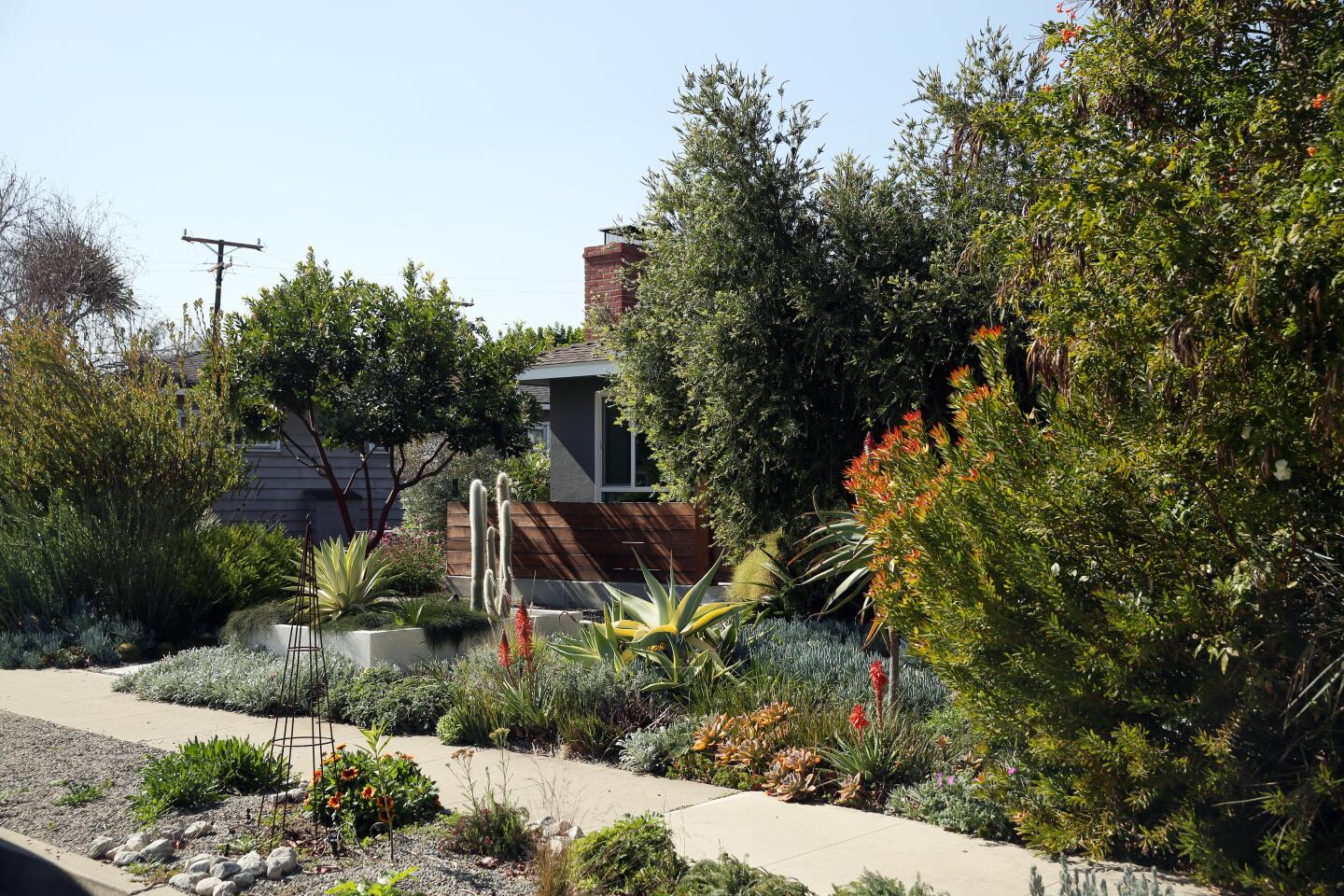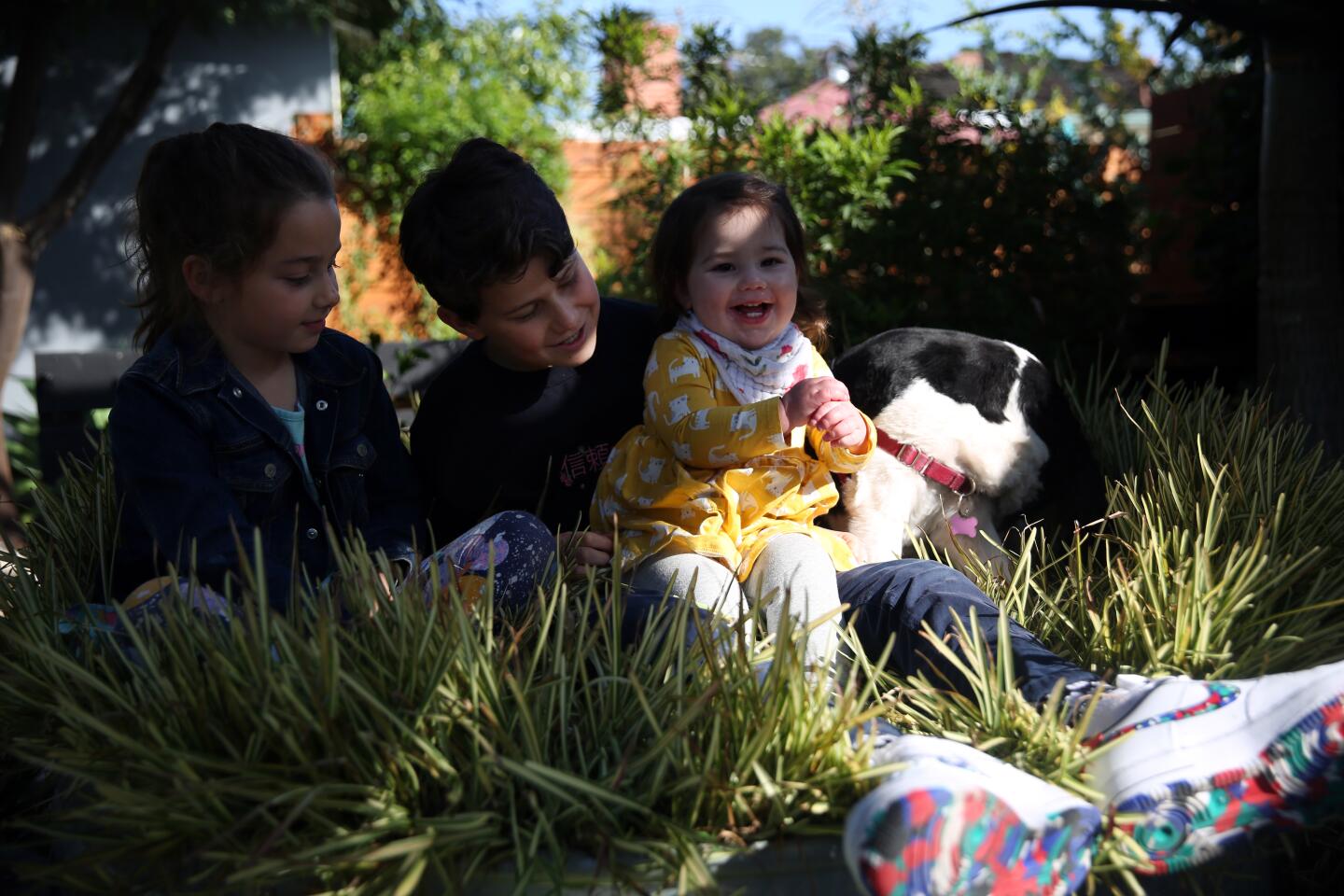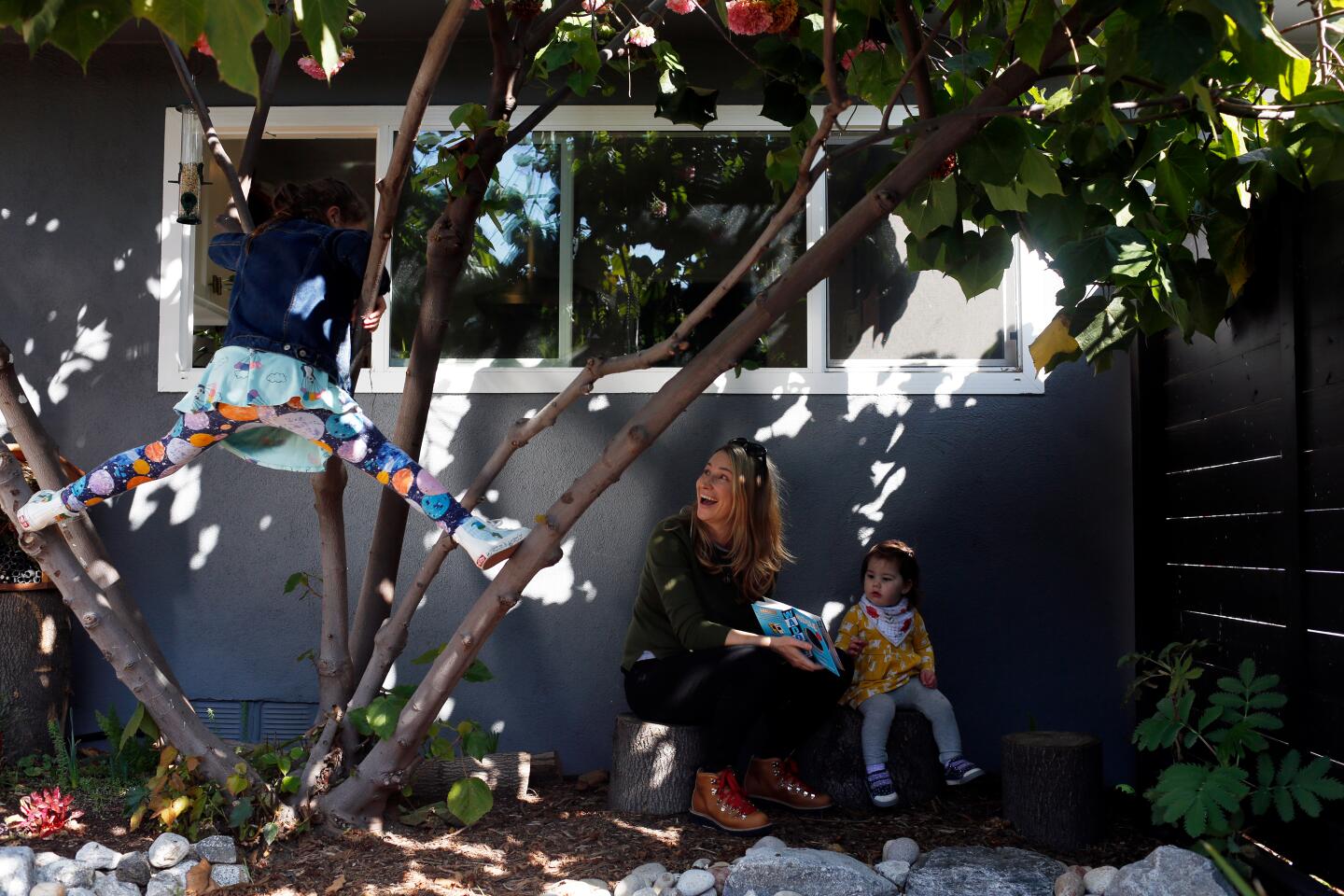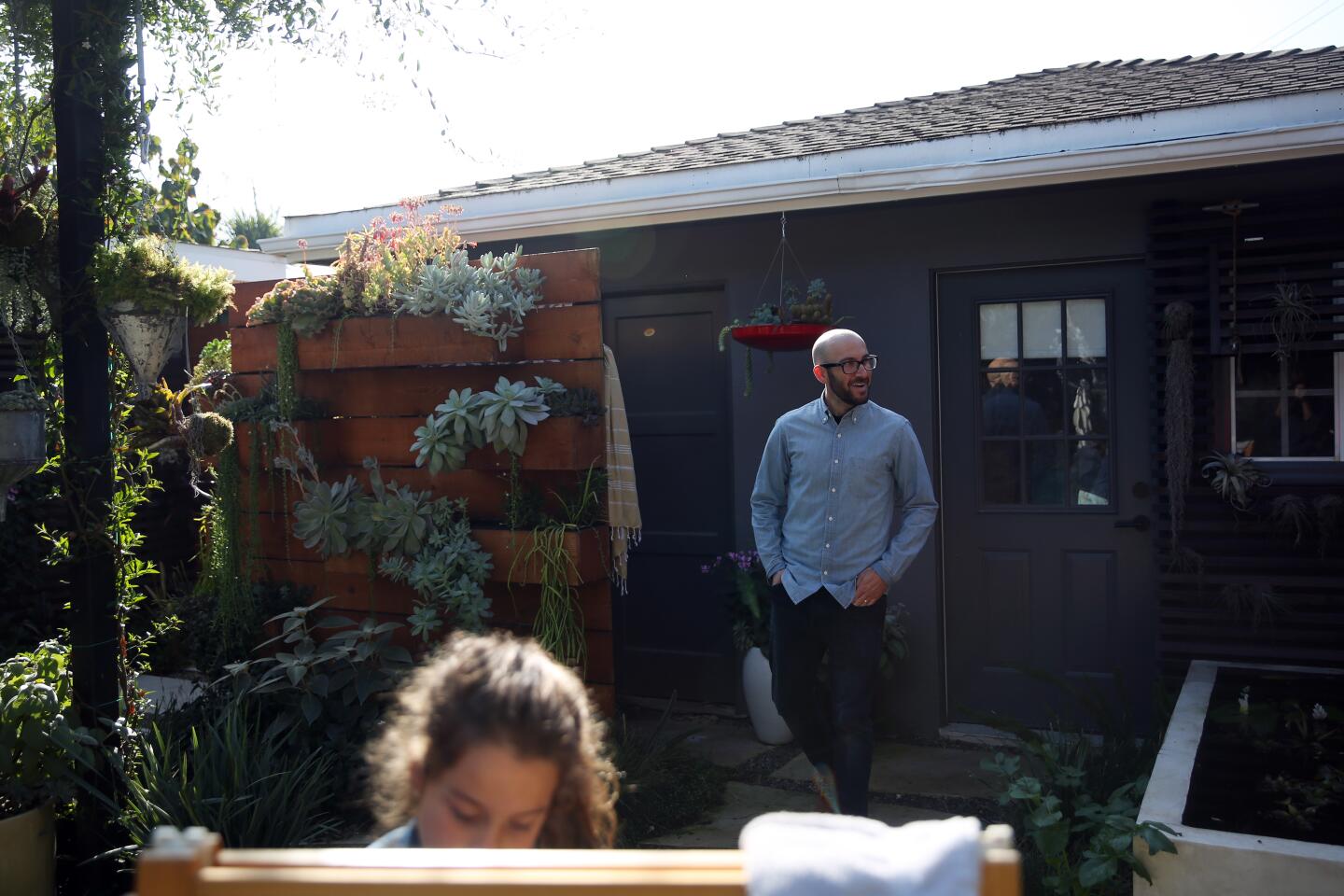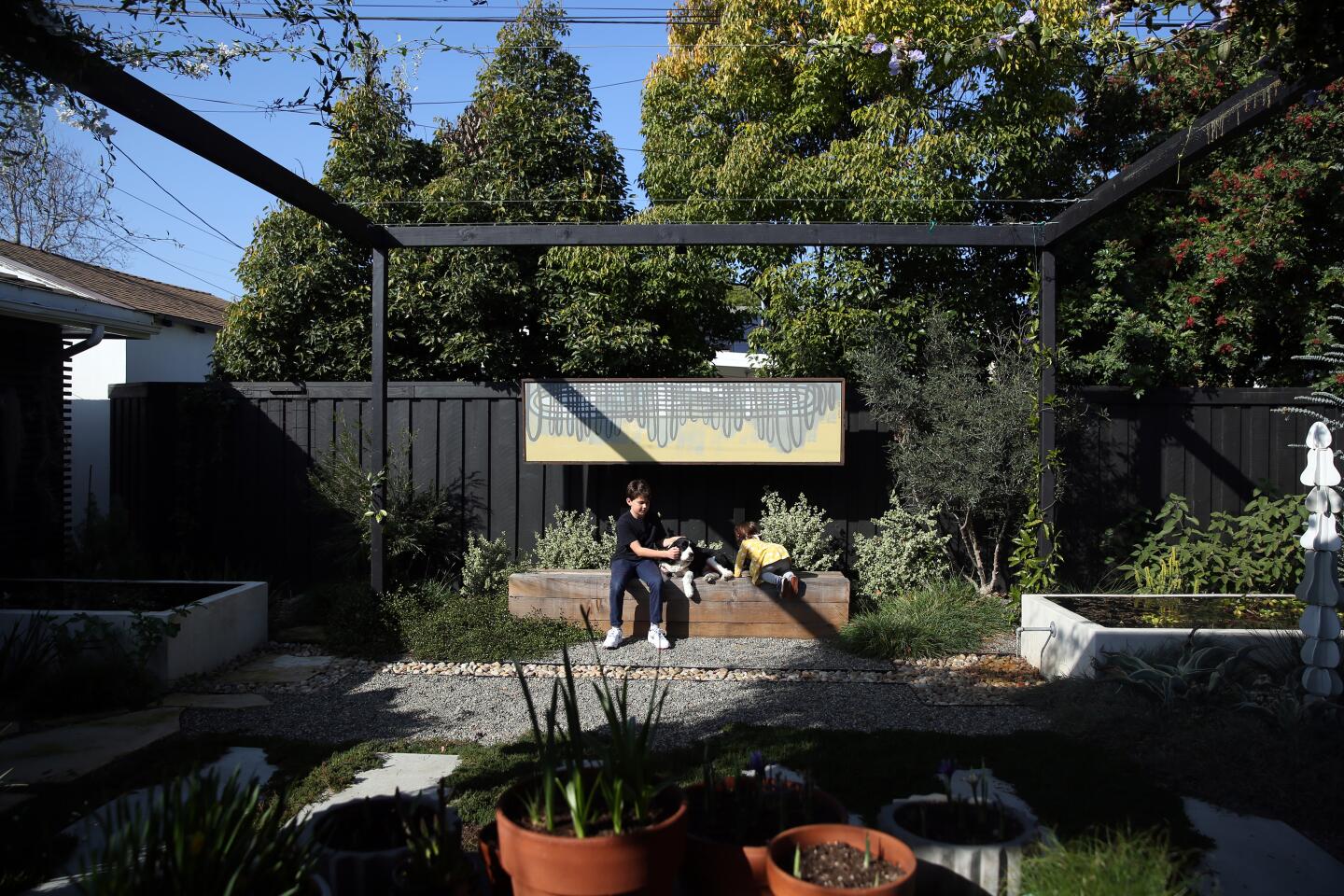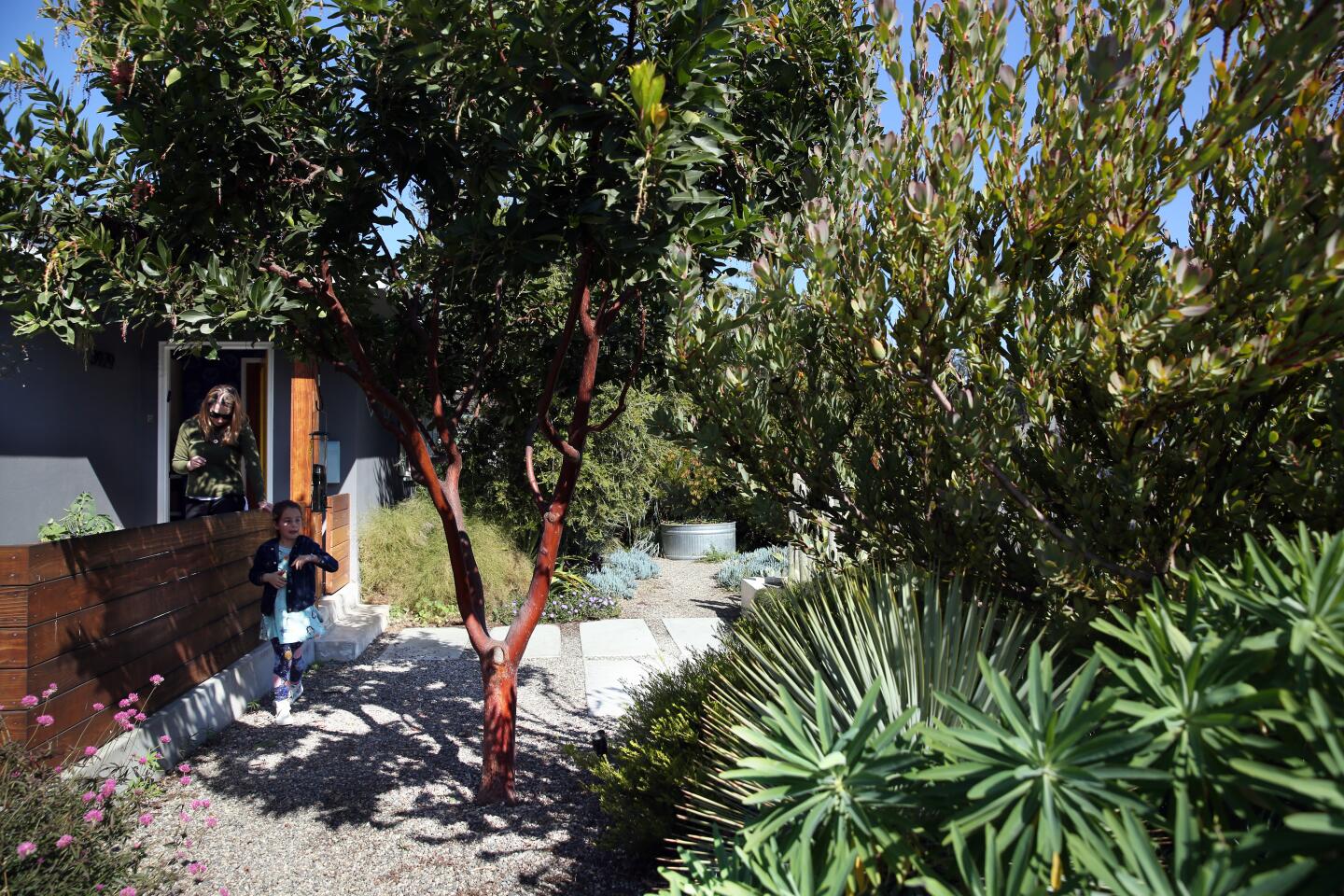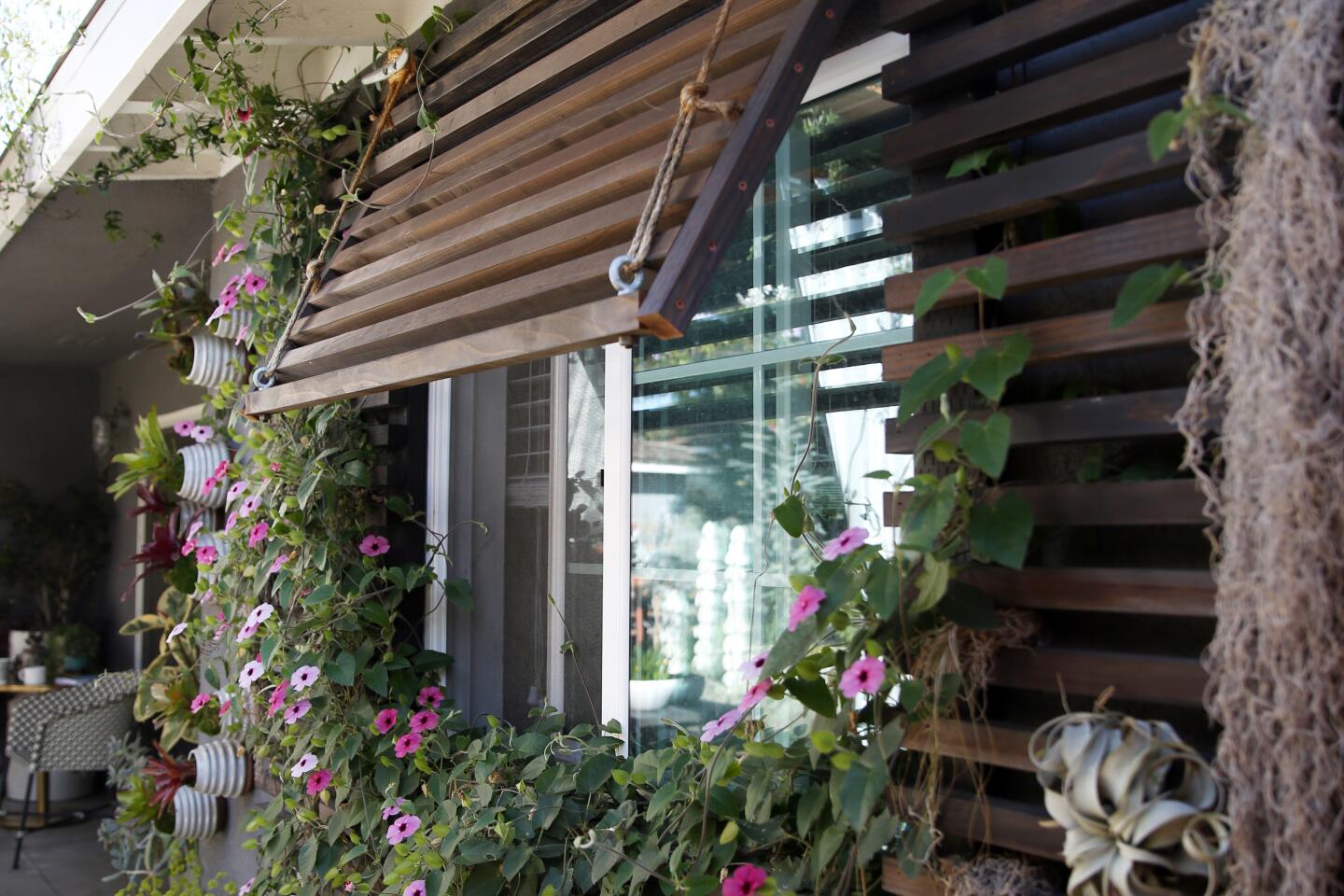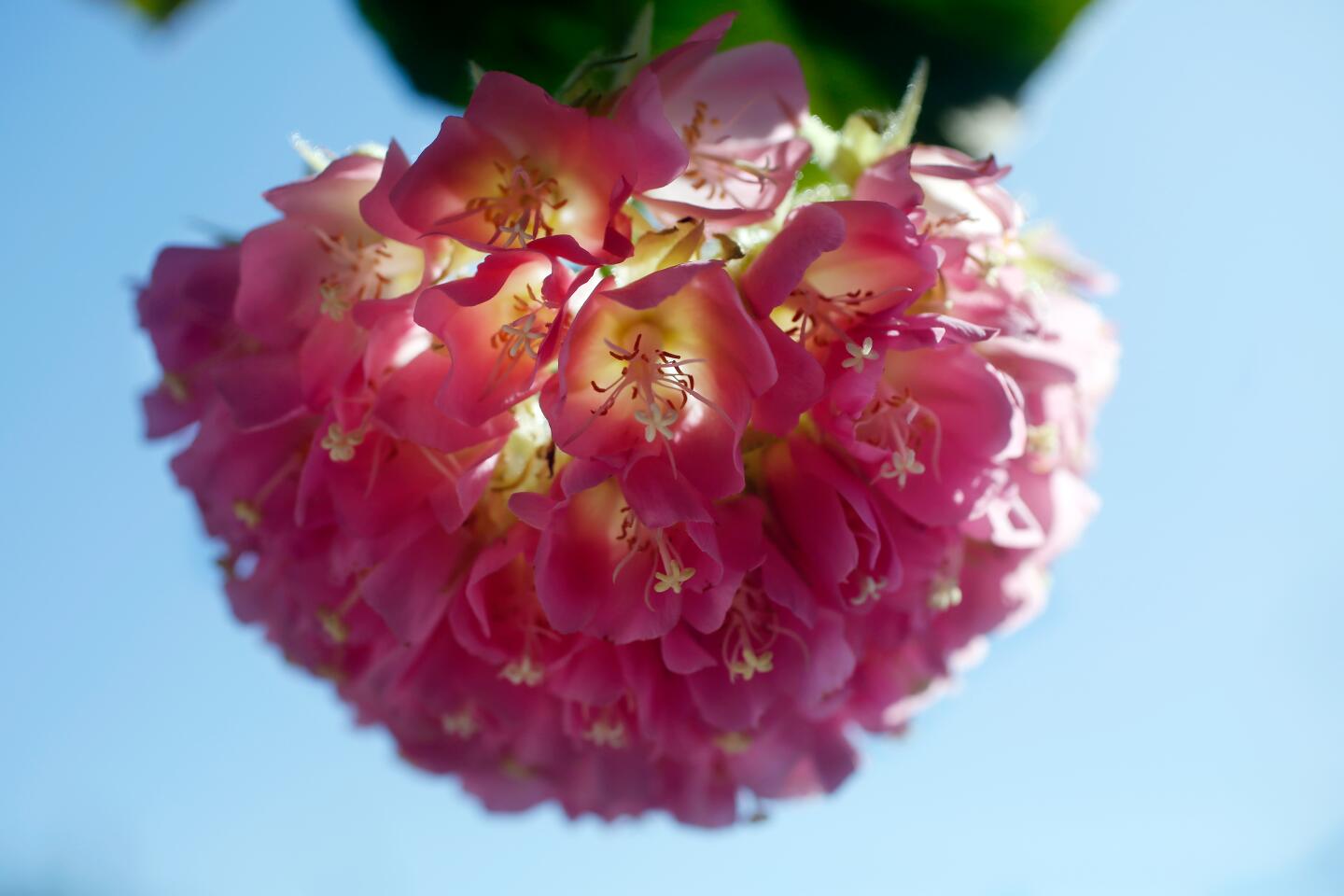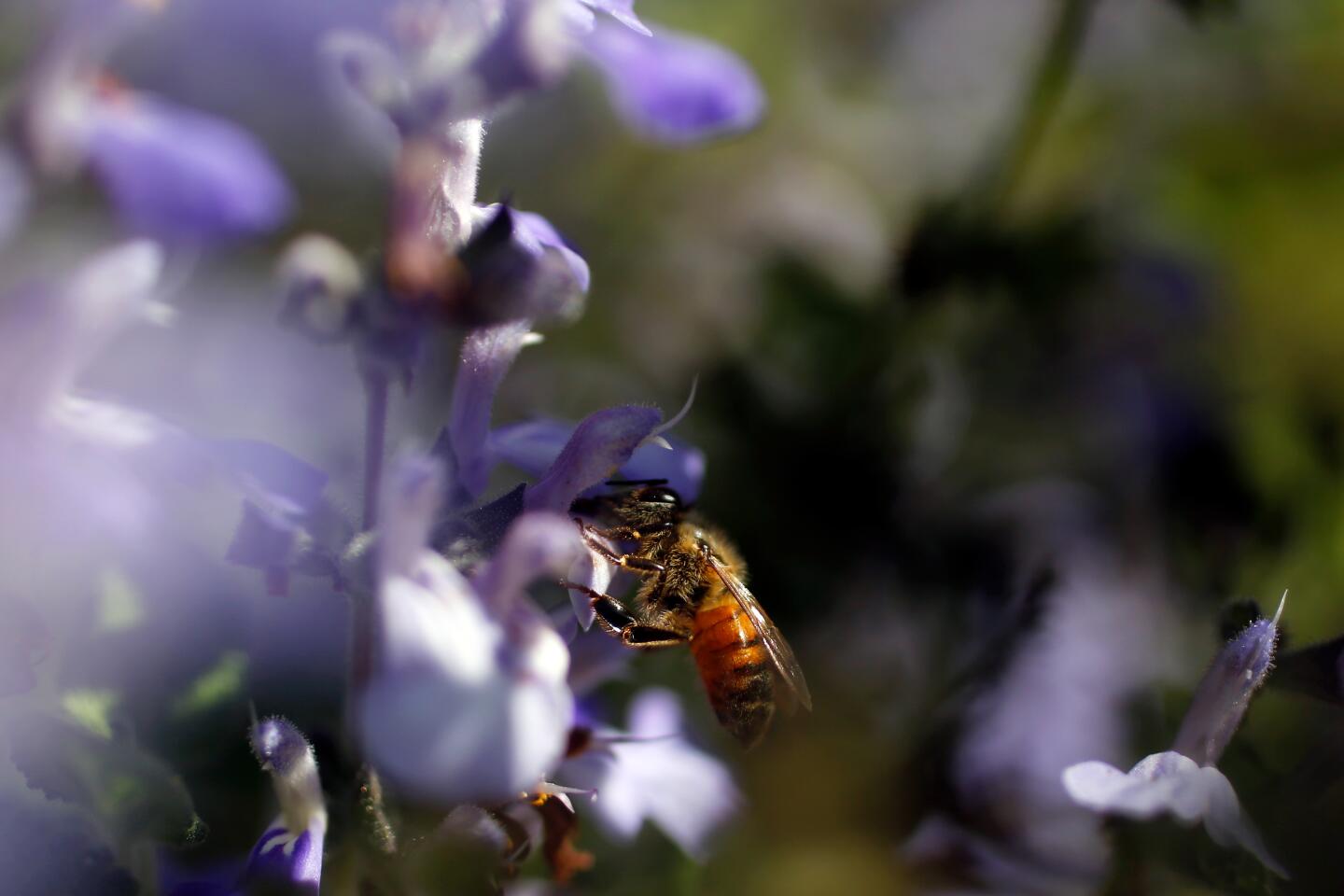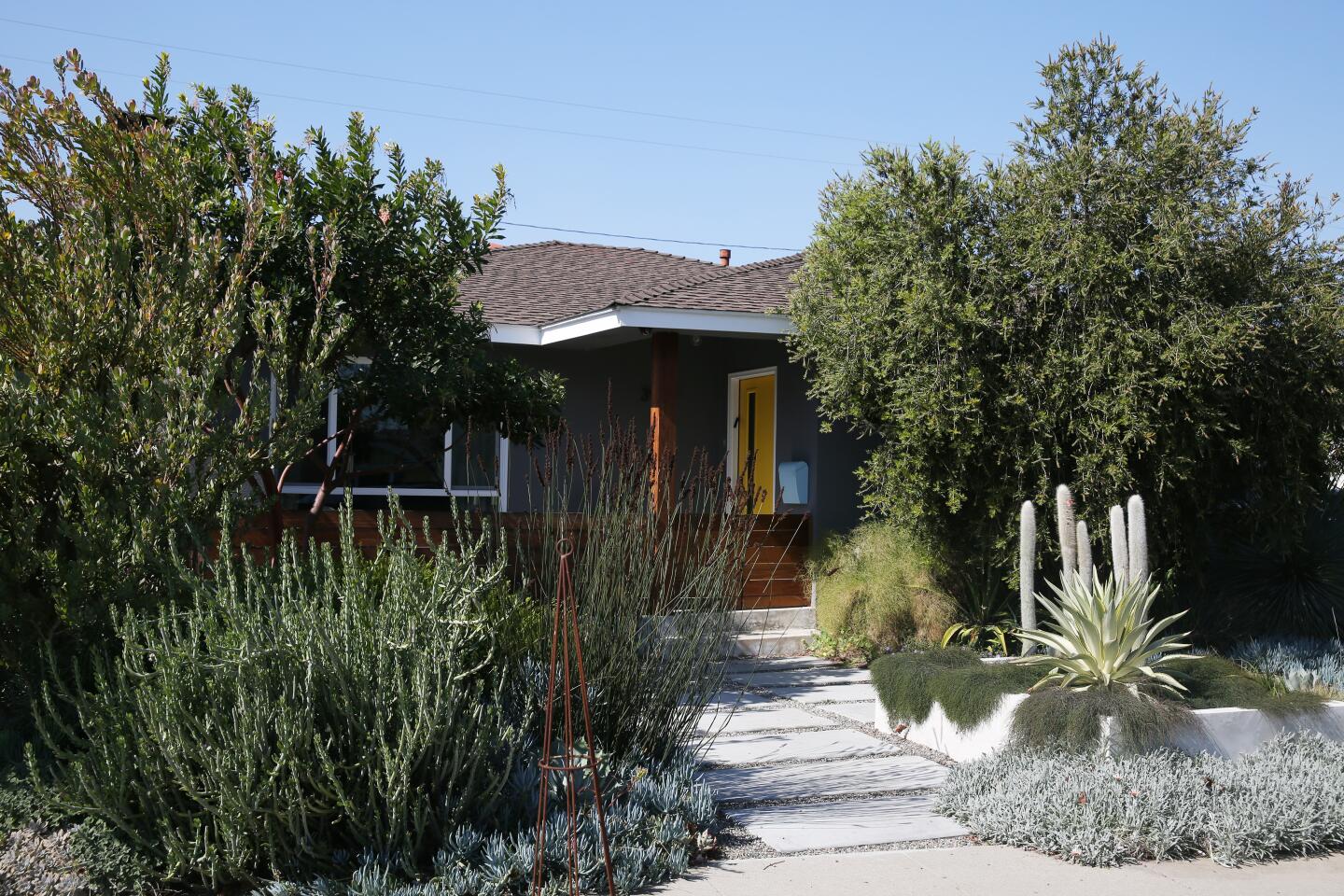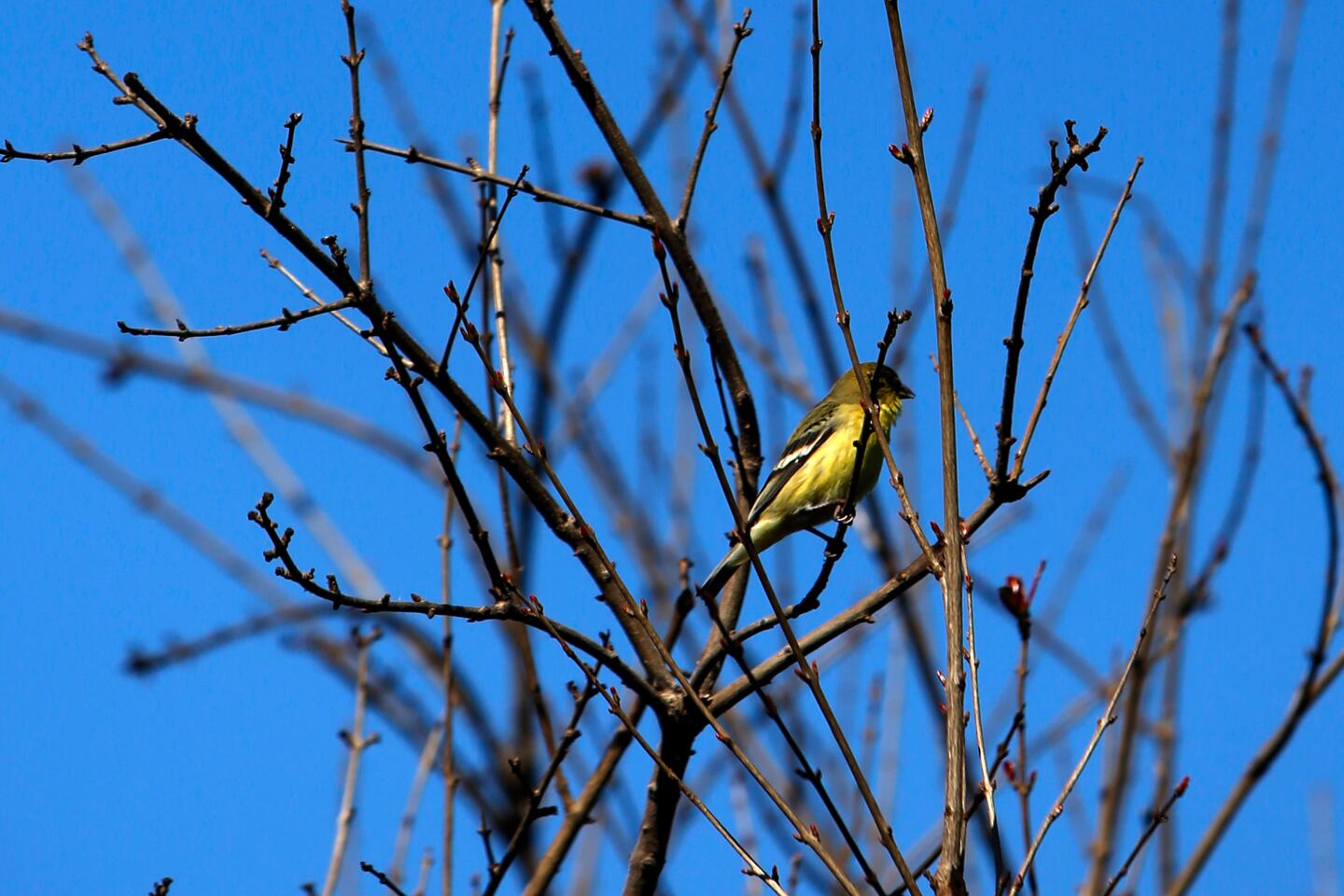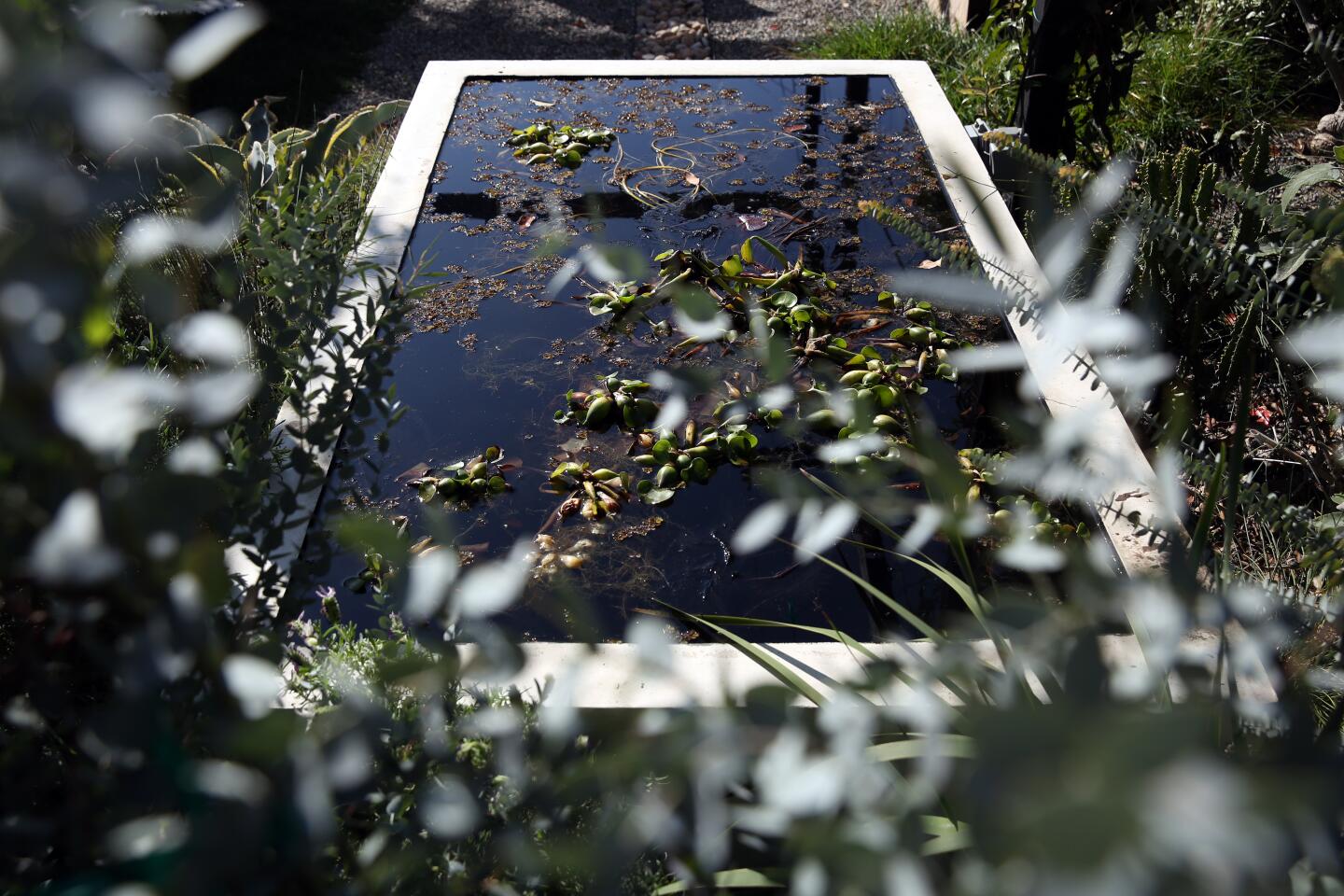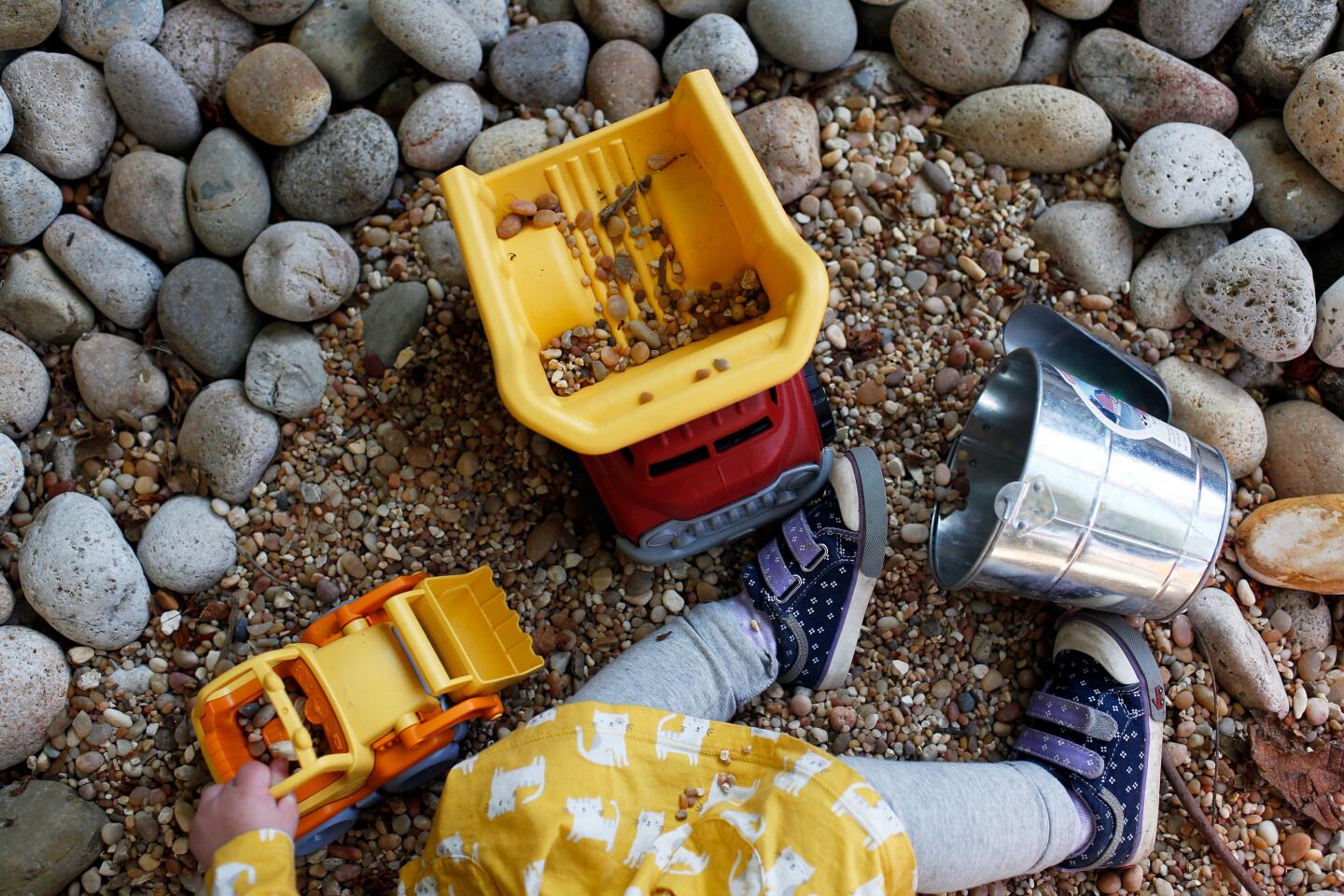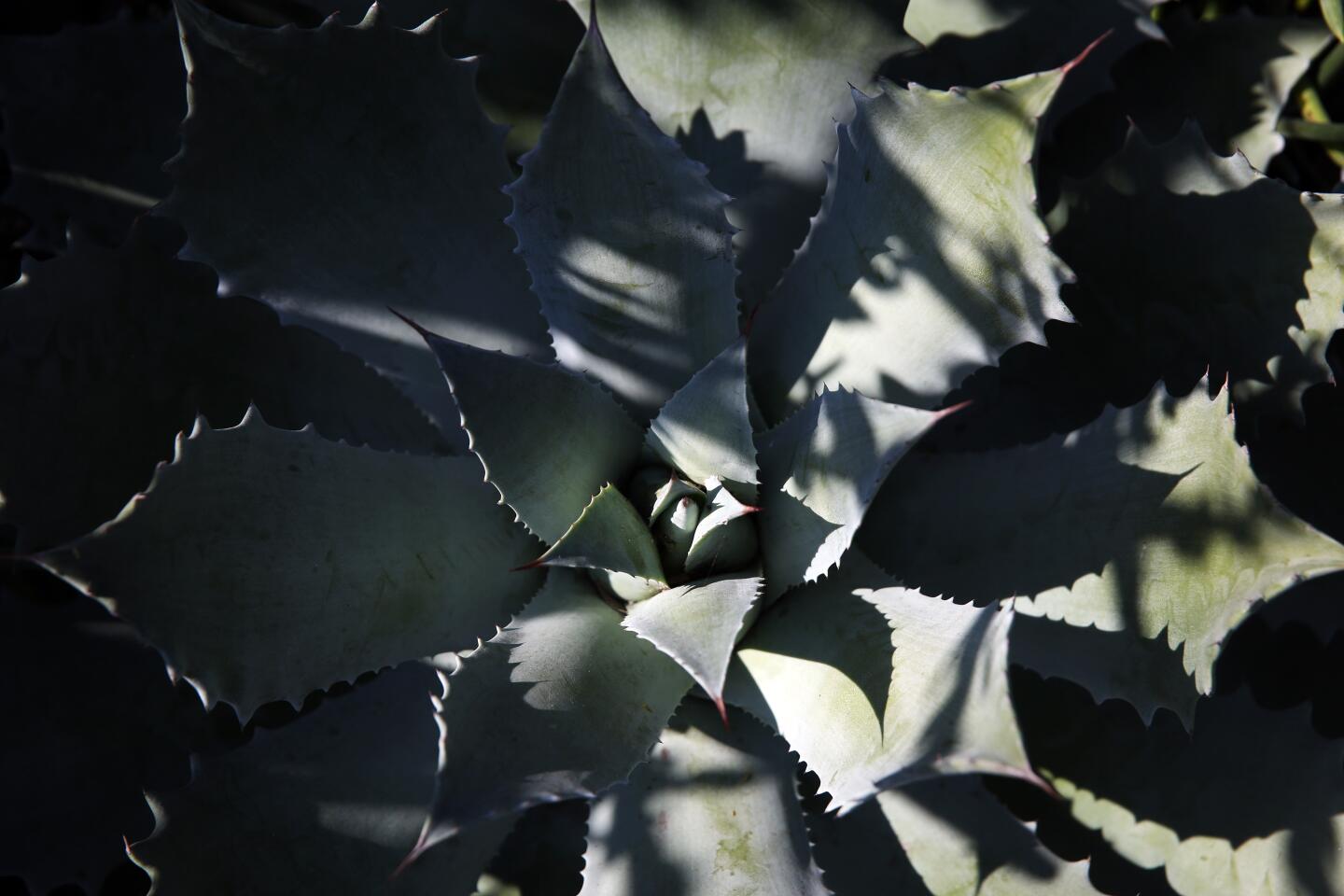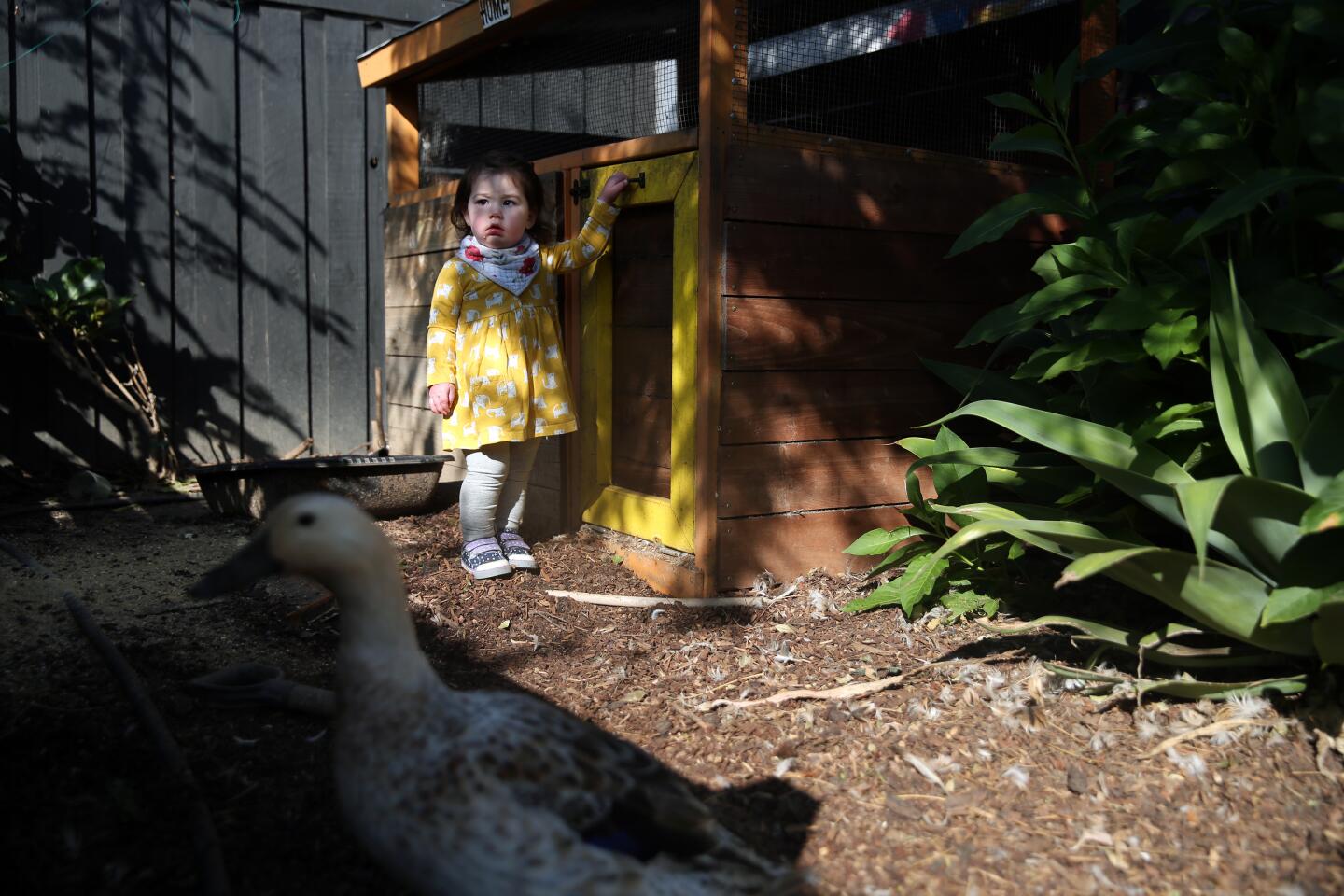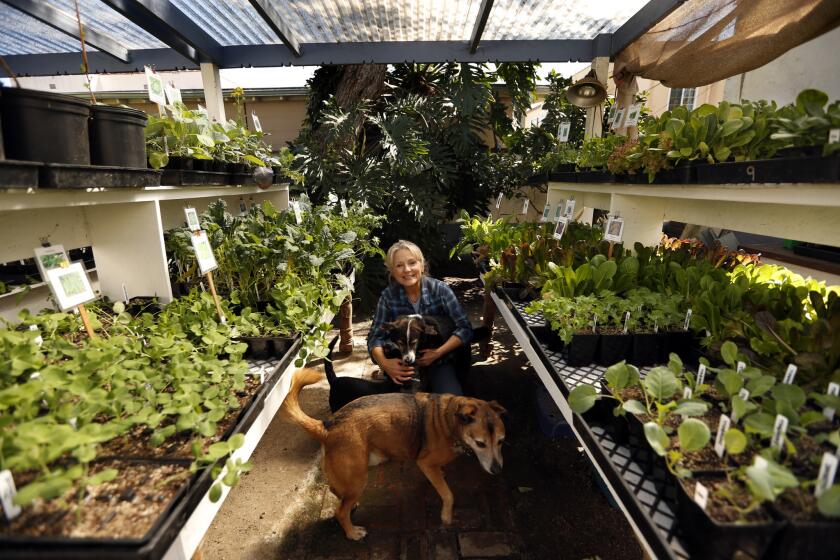In turbulent times, a magical art-filled garden offers solace
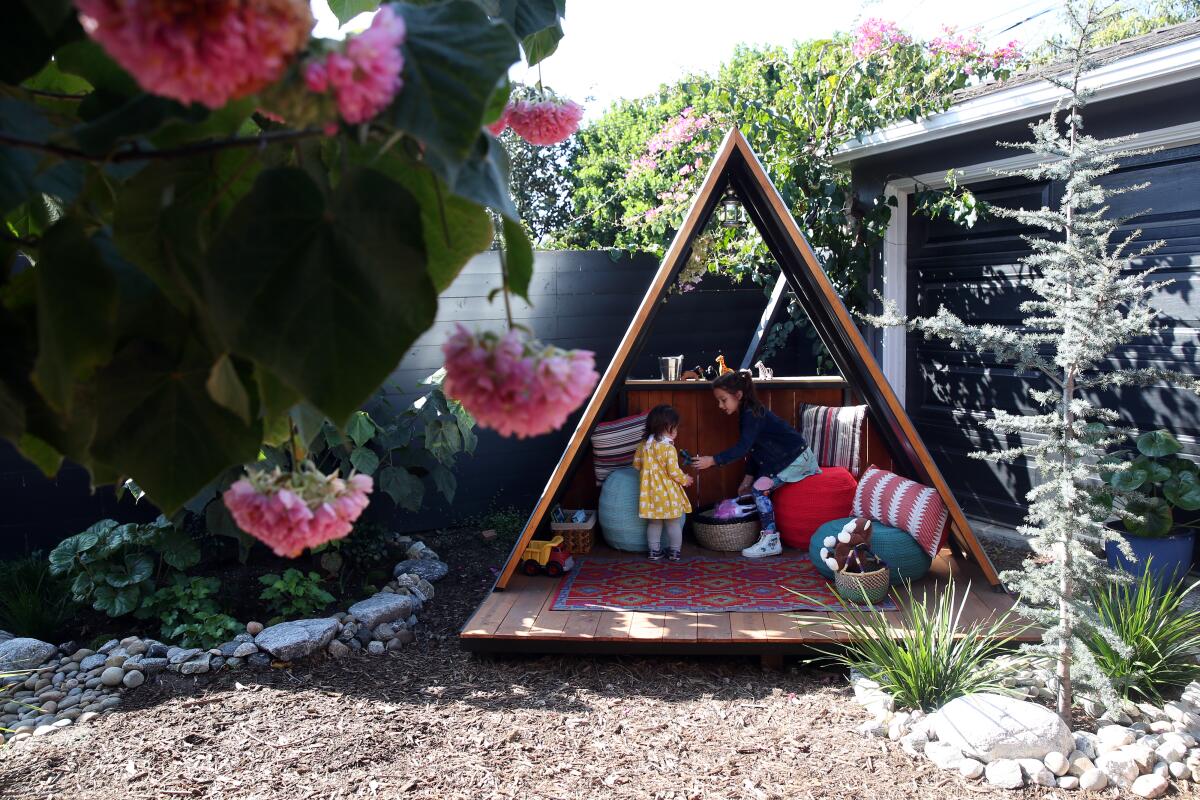
Long before the COVID-19 pandemic altered the normal rhythms of our everyday lives, Jeremy Glatstein, an ardent plantsman, sought solace in his Long Beach garden.
“Gardens have always been a place of refuge, whether from the heat of a punishing desert sun or the unkindness of modern life,” Glatstein said. “Whole worlds are contained within a lovingly planted terra cotta pot, a window box or a jungle of plants grown indoors.”
The 39-year-old art history professor has seen firsthand how a garden offers comfort during troubling times. He’s watched his children splash in pools of water, nibble on nasturtiums, and chase after monarch butterflies and the family’s Welsh harlequin ducks. He’s witnessed birds, butterflies and bees find shelter in the riot of plants that surround his home.
Gardeners, take a deep breath. We’ve made a list of 10 garden tasks that can help save your sanity now and make the coming months much more pleasant.
“I don’t know how I would have survived this past year without my garden,” said Glatstein. “It is a relief to gardeners that science is recognizing what we have always known, that gardening is hugely beneficial to the body, mind and environment. Gardens can restore nature, bringing wildlife to even dense urban neighborhoods, and restore peace and tranquility to a troubled mind. There is no need to think of the garden as either a privileged plot of suburban land or a pastoral ideal.”
When Glatstein and his wife, Allison, bought their Long Beach home eight years ago, the front yard was grass and concrete. But over the course of a year, he managed to remove the lawn and start over.
Using a plant journal, he documented each plant’s progress.
“Looking back, it’s shocking how many failed experiments I had both in terms of aesthetic effect and basic viability,” he said.
He planted Leucadendron discolor ‘Pom Pom’ and grape-scented Salvia melissodora along with a blooming Tecoma alata ‘Orange Jubilee’, Myrica californica (Pacific wax myrtle), an arbutus tree, Callistemon viminalis ‘Slim,’ Grevillea ‘Long John’ and Coleonema pulchrum (pink breath of heaven).
Recently, he overhauled his driveway and created a shady woodland retreat for his children — Nili, 7, Ari, 11, and Talia, 2 — who play in the A-frame fort he built and tend an edible garden he planted underneath a fragrant Dombeya wallichii (pink ball tree).
Everything in the garden, he said, is geared toward wildlife. “It feels good to help the birds. I can do something for them.”
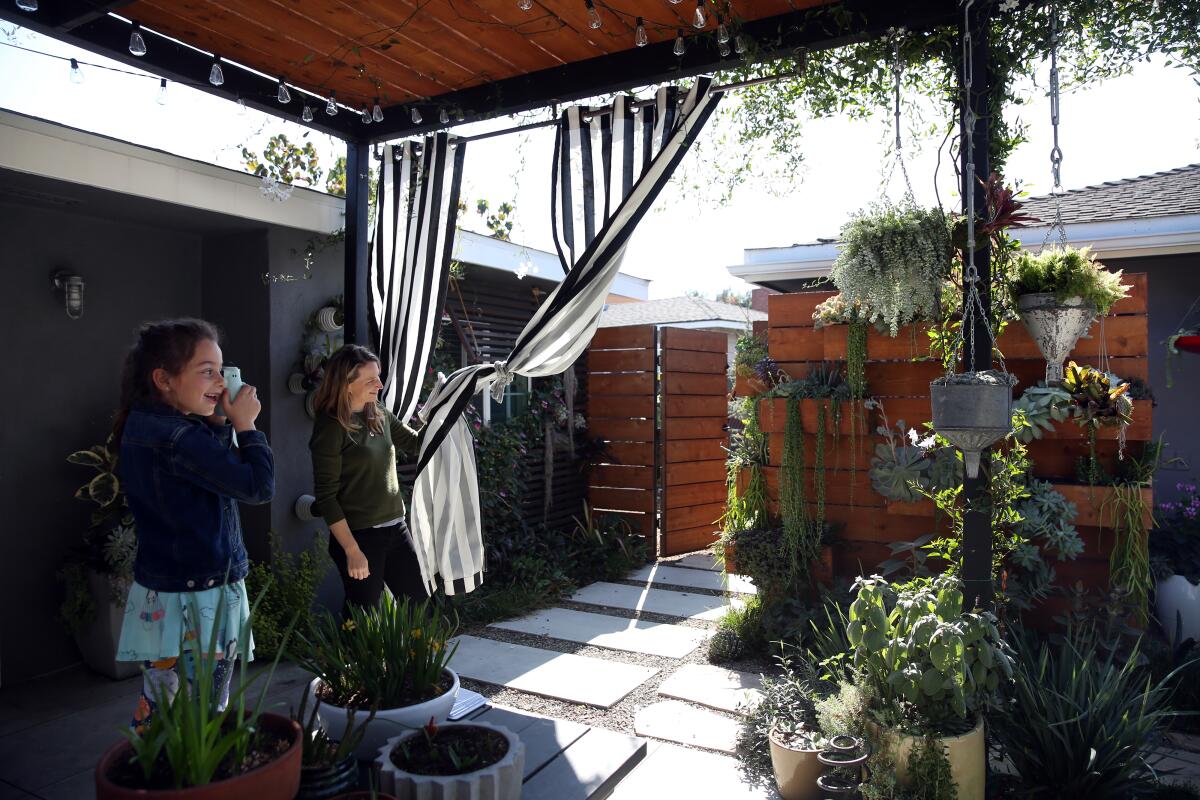
A few years ago, Glatstein reached out to landscape designer Dustin Gimbel to help him rebuild the backyard after it was trashed in a remodeling project.
“I knew his work well,” Glatstein said of Gimbel, who is also a ceramist. “I wanted to work with someone who loved gardens as much as I do. I viewed the project through the eyes of our mutual love of plants.”
Plant a native; help save Los Angeles. That’s Cassy and Kirk Aoyagi’s mission. They’re not alone.
Gimbel said he was surprised an accomplished gardener such as Glatstein would ask him for help.
“I saw that he had a beautiful front garden already,” Gimbel said. “But Jeremy was ready for a change. He gave me free rein to do my thing.”
Gimbel started by dividing the backyard into zones: Shade, water features and art. Water, and lack of water, is a recurring theme, represented by two ponds connected by a dry rill. Plants are grouped by color and texture to provide different experiences throughout the yard.
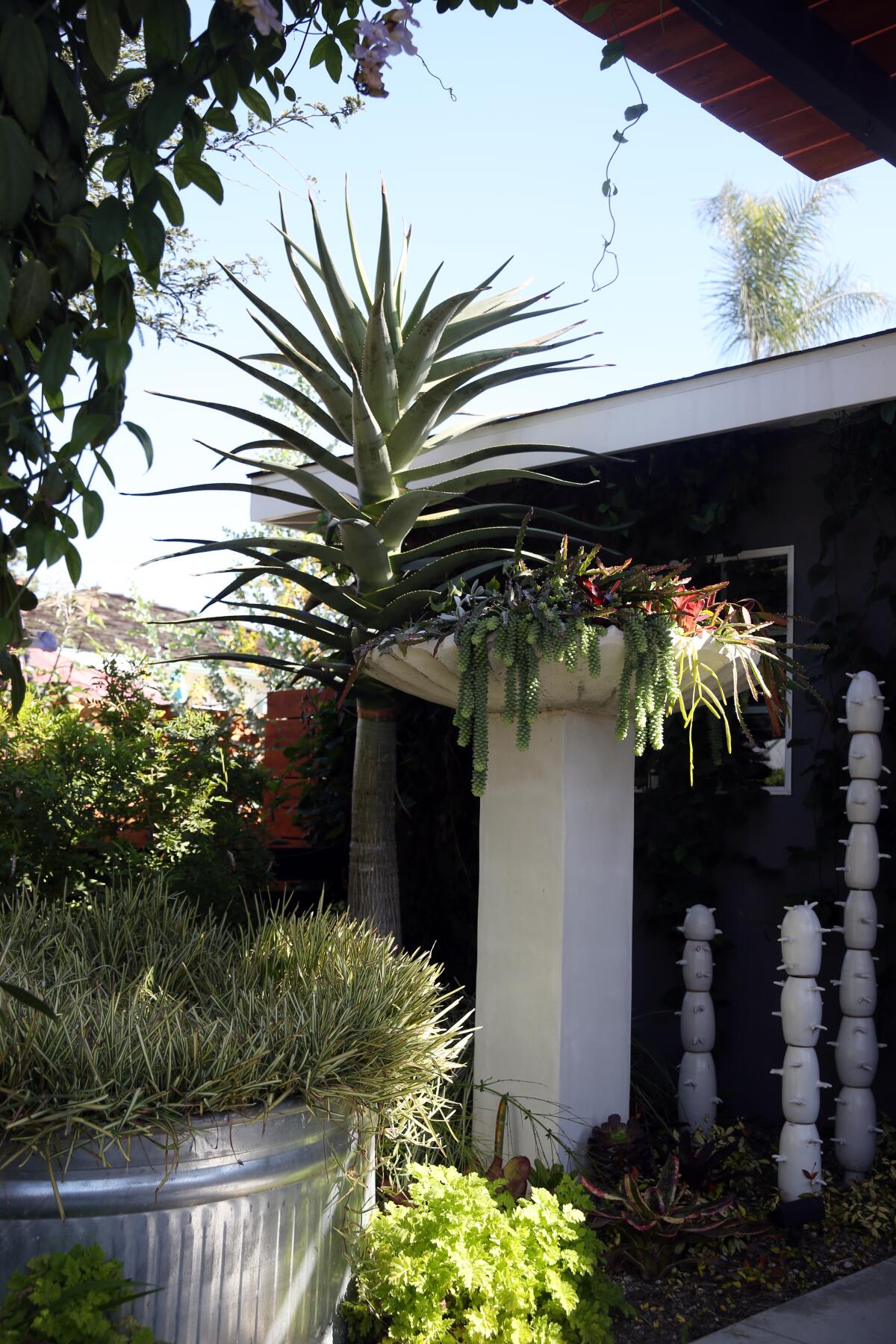
But what strikes you as you enter the backyard is Gimbel’s art: ceramic euphorbia towers that reach to the sky, ring pot planters installed on a shade structure, and a water-themed painting that hangs over a bench at the rear of the yard.
“We wanted something that was beautiful and would be an adventure for the kids,” Glatstein said. “We wanted to invest in a work of art.”
Gimbel created niches to display Glatstein’s plant collections: a succulent wall made of wood that doubles as an outdoor shower screen, a shade structure covered in tillandsia, an old fountain repurposed as a planter for Rhipsalis, succulents and mini Neoregelias, a big tub of variegated St. Augustine grass that serves as a play surface for kids and the family’s three dogs, and hanging planters made of vintage automotive parts.
A shade structure allows the family to step out of the house and enter a dining area. “Circulation is important in garden design,” Gimbel said. “I always try to have some additional seating and some place for people to go. That was an important thing — to make the backyard another room for the house.”
In front, Gimbel added a concrete pond, agave and Cephalocereus senilis (old man cactus) in a raised bed for continuity. “Hardscape helps to tame the chaos,” he said.
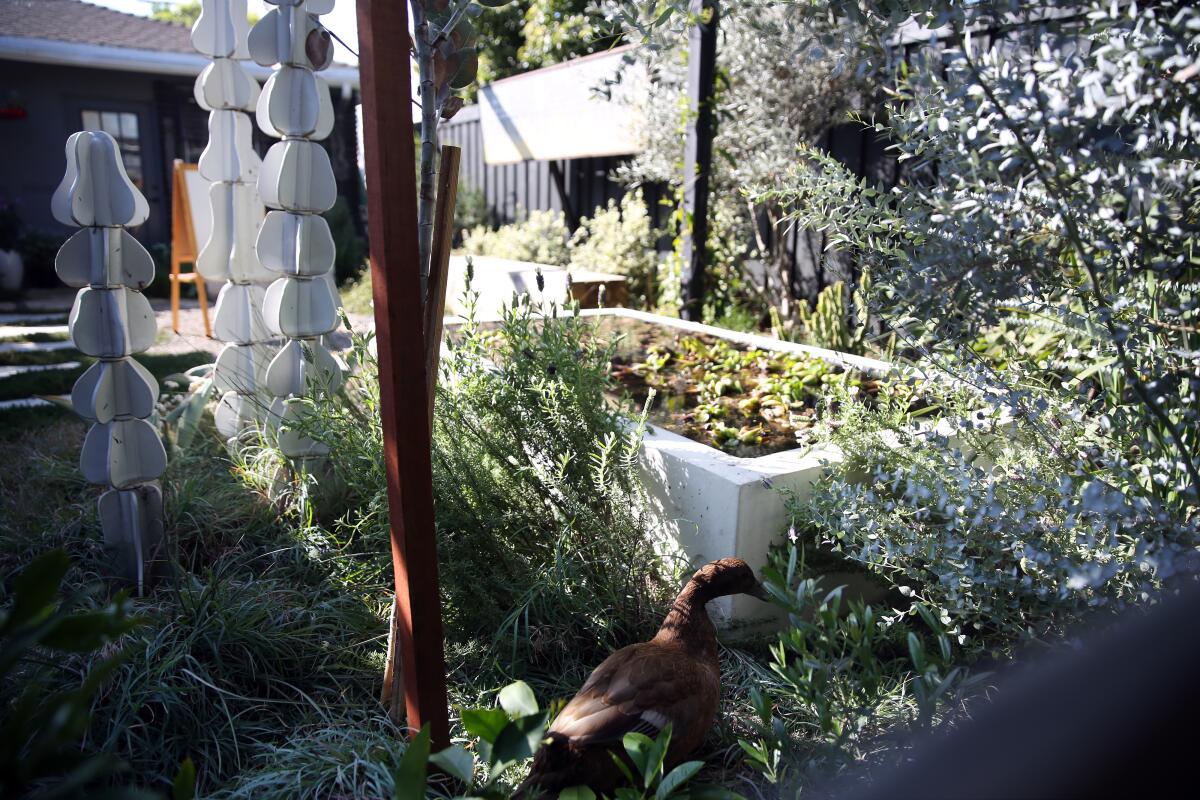
As sheltering in place continues, Gimbel, who was scheduled to display his ceramic works at Sherman Gardens May 1-Sept. 15, said he understands Glatstein’s view of gardening as therapy. “You have a certain amount of control over a garden,” he said.
And in a world that feels out of control, Glatstein is thankful for the ability to tinker in his garden. “It will never be finished,” he said. “And I wouldn’t want it to be.”
Plant nurseries are now offering curbside service: ‘A resurgence of victory gardens’
Dustin Gimbel offers tips on things you can do in the garden while quarantined:
1. Take a cutting
This is a great time to start a cutting, whether it’s of a beloved house plant or a garden shrub. You can use potting soil or perlite and rooting hormone, or the old glass-of-water-on-the-windowsill trick.
2. Pull weeds
The weeds are really growing with the recent rains and as we head to the equinox. Feel overwhelmed? Set a timer for 10 minutes; you’ll get more done than you might think.
3. Plant seeds
Get out those vegetable seeds and plant stuff you’d like to eat. No seed packets? Scoop the seeds out of the next tomato you slice. You can plant them in 4-inch pots or in the ground. Fresh seeds come up quickly. Get the kids involved.
4. Be frugal
The next time you cook with green onions, cut off the bottoms about one inch from the roots. These can go directly into the garden or live in a glass of water.
5. Pruning
You don’t have to be an expert. Give a haircut to plants that are overgrown and remove deadwood that harbors disease.
6. Rake
Raking leaves and debris is good for the look of the garden and almost counts as cardio.
7. Clean and organize
Stack pots, throw away dead plants, sharpen and oil tools.
8. Set up a houseplant spa
Give your houseplants a shower. Get off all the dust and spiderwebs. If you find insects, wash them off with a gentle diluted soap solution. Remove all dead foliage.
9. Repot
Take inventory of your plants and see if any need to be repotted in the next size up. Be careful not to jump to a much bigger container, as the plant may just sit there and pout.
10. Plan
This is a perfect time to research plants for the garden. Two great growers with accurate information are San Marcos Growers and Monrovia Nursery. For ordering plants/retail therapy, try Plant Delights, Annie’s Annuals and Perennials, Johnny’s Selected Seeds and Baker Creek Heirloom Seeds.
More to Read
Sign up for The Wild
We’ll help you find the best places to hike, bike and run, as well as the perfect silent spots for meditation and yoga.
You may occasionally receive promotional content from the Los Angeles Times.

